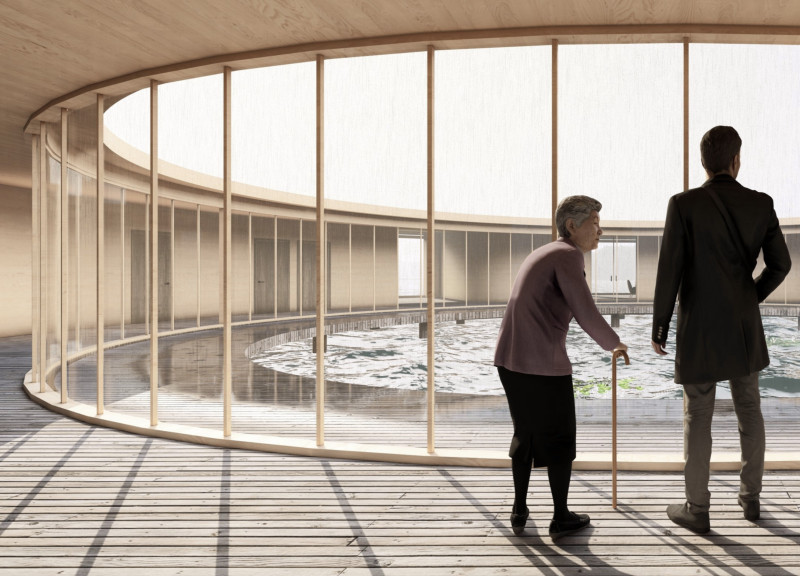5 key facts about this project
At its core, the project stands as an exemplary model of contemporary architecture, weaving together a cohesive narrative through its carefully selected materials and innovative design strategies. The primary function of the building reflects its intended use, which could range from residential to commercial or institutional, and it is designed to accommodate the activities it houses with efficiency and comfort. Every element within the building has been thoughtfully integrated to enhance user experience, ensuring that the end users can engage with the space on multiple levels.
Central to the design is the use of materials, each chosen for their aesthetic qualities and their contributions to sustainability. The project employs a blend of natural materials such as wood, stone, and glass, which not only provide visual warmth and texture but also promote energy efficiency. The careful selection of insulation materials enhances energy conservation, while the use of natural stone provides durability and a connection to the local landscape. Each material serves a dual purpose, being functional while also contributing to the overall visual narrative that the architecture seeks to convey.
The design showcases unique features, such as open floor plans that encourage flexibility and adaptability. This aspect of the project reflects a modern understanding of space utilization, offering the potential for various layouts that can accommodate changing needs. Large, strategically placed windows allow natural light to flood the interior spaces, fostering an environment that prioritizes well-being and sustainability. This connection to the outdoors not only enhances the aesthetic quality of the interiors but also serves to reduce reliance on artificial lighting, positively impacting energy consumption.
Another noteworthy aspect of the project is its relationship with the surrounding landscape. The architectural design seamlessly integrates with its context, respecting the existing topography and ecosystem. Landscaping has been meticulously planned to complement the structure, incorporating native plants that require minimal maintenance and irrigation. The result is a project that not only stands as an individual entity but also exists in harmony with its surroundings, echoing a commitment to ecological responsibility.
The use of innovative construction techniques further sets the project apart. Techniques that promote efficiency and reduce waste have been incorporated into the construction phase, reflecting a forward-thinking approach to building. Moreover, details such as rainwater harvesting systems and green roofs have been integrated into the design, contributing to the building's overall sustainability and resilience against climate change.
This project is not just about architecture; it captures the essence of contemporary design thinking—a thoughtfulness that considers the past, present, and future. It embodies architectural ideas that challenge traditional norms, advocating for design that is not only visually engaging but also socially and environmentally responsible. The interplay between the interior and exterior spaces invites users to experience the building as a part of the larger environment, promoting a sense of community and belonging.
For those interested in exploring the architectural nuances further, the project's presentation provides a wealth of information, including architectural plans and sections that detail the creative process behind the design. Engaging with these elements will offer deeper insights into the architectural decisions made throughout the project, highlighting the interplay of form, function, and context that make this project a noteworthy addition to modern architecture. The thoughtful integration of design and materiality reflects a broader narrative about contemporary living, encouraging a re-evaluation of how spaces can better serve their inhabitants and the environment.
In exploring the project presentation, readers are encouraged to delve into the architectural designs and concepts that underpin this work, gaining a comprehensive understanding of how innovative architecture can enrich both urban and natural landscapes.























